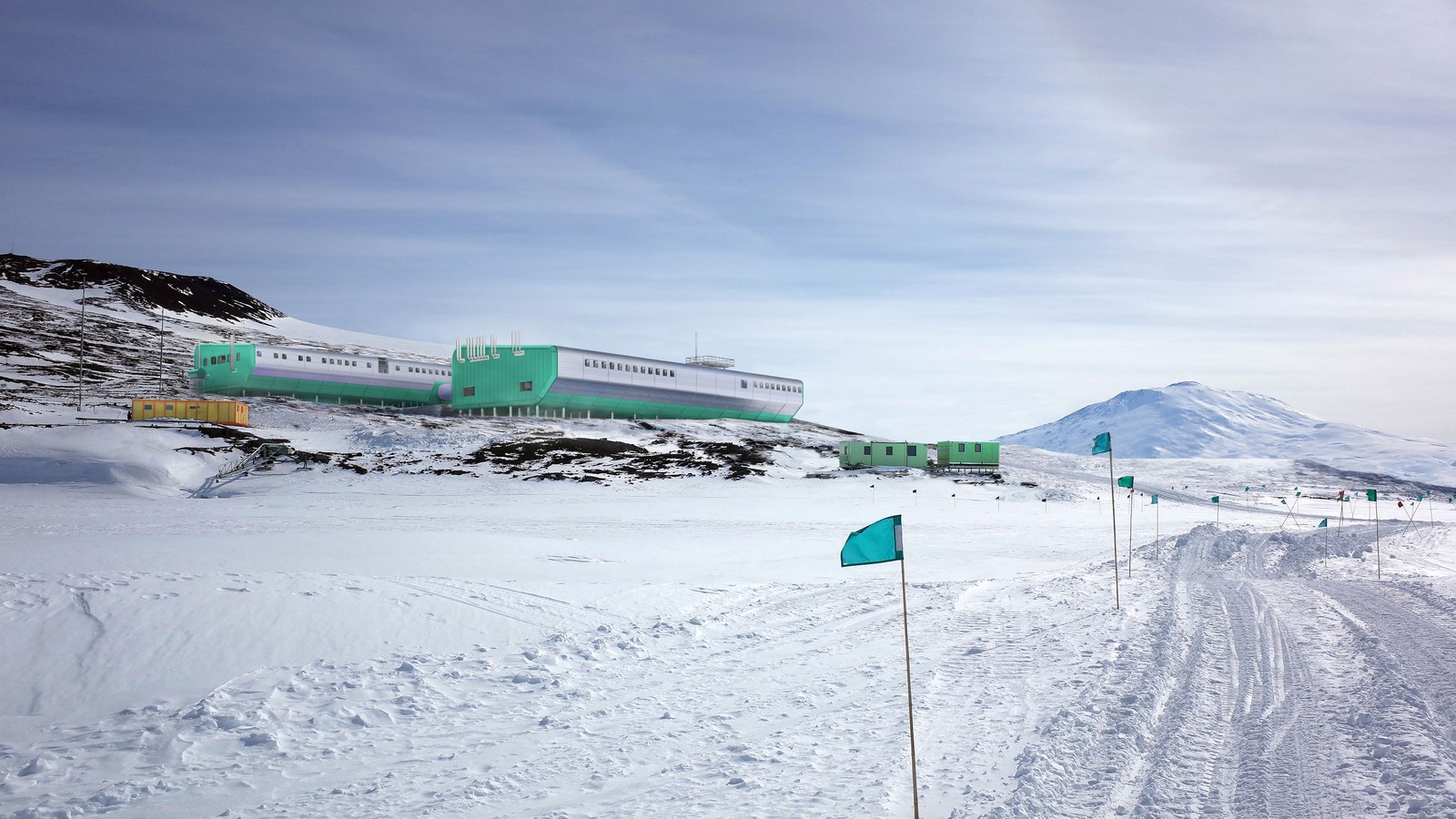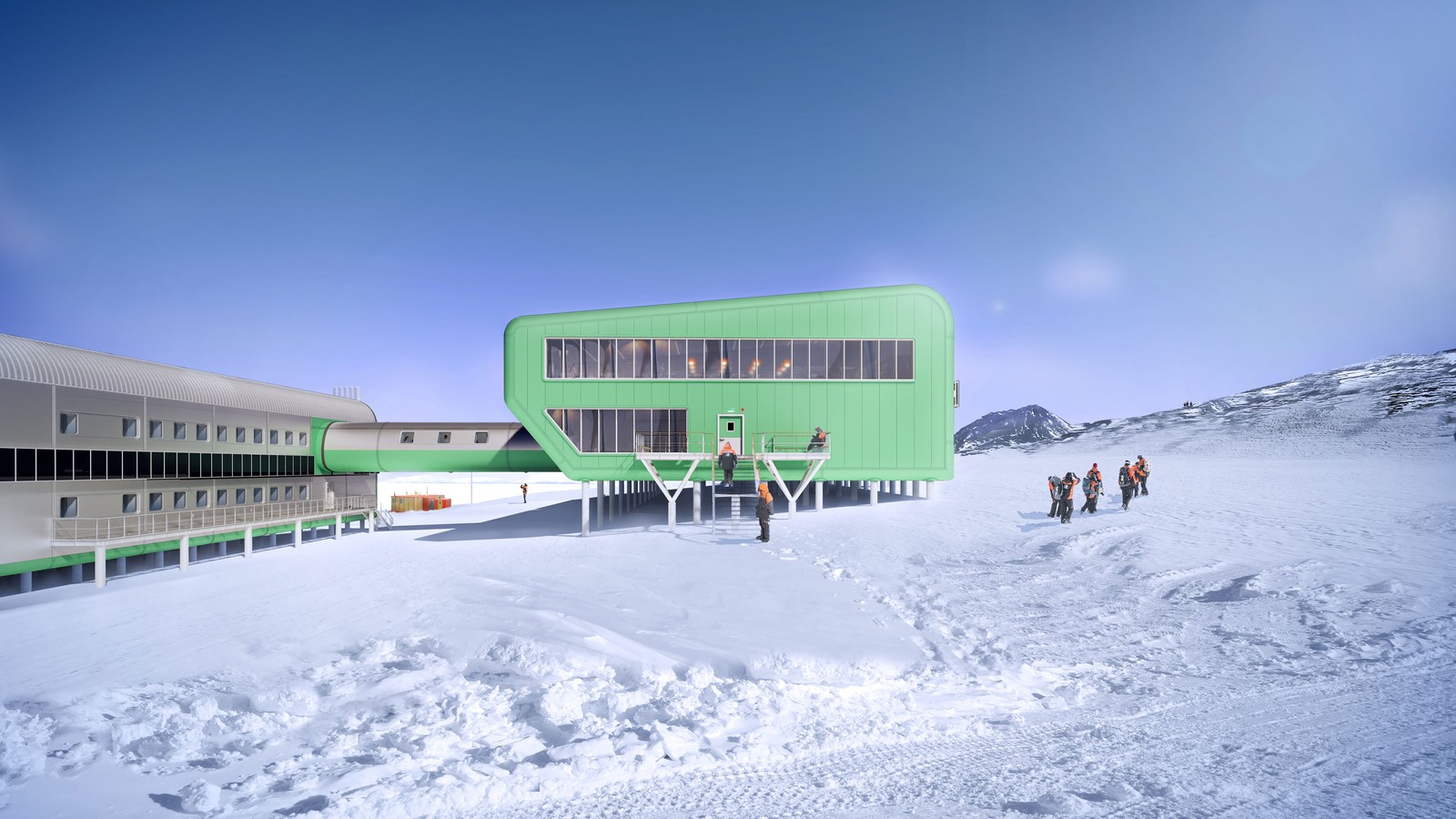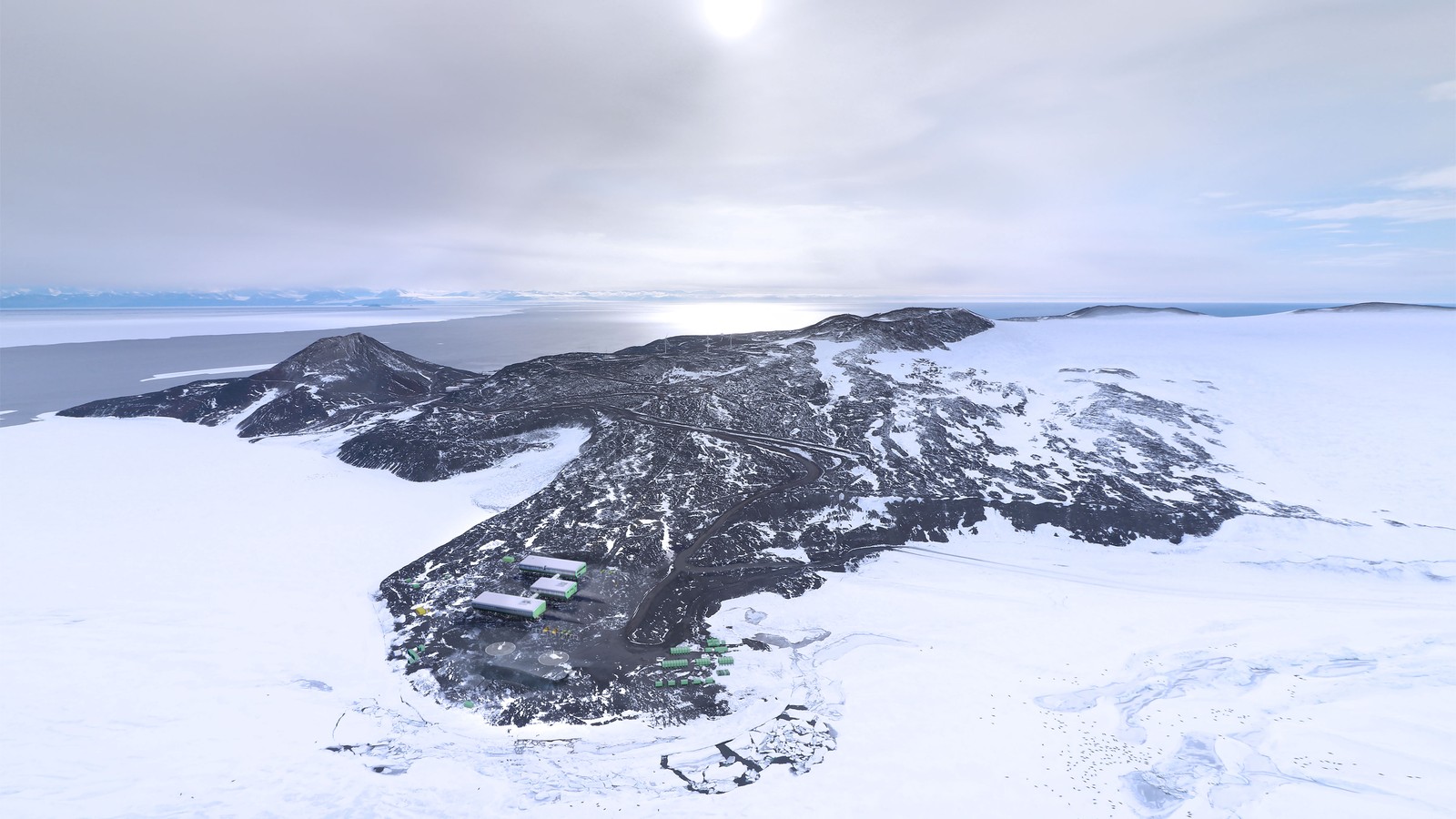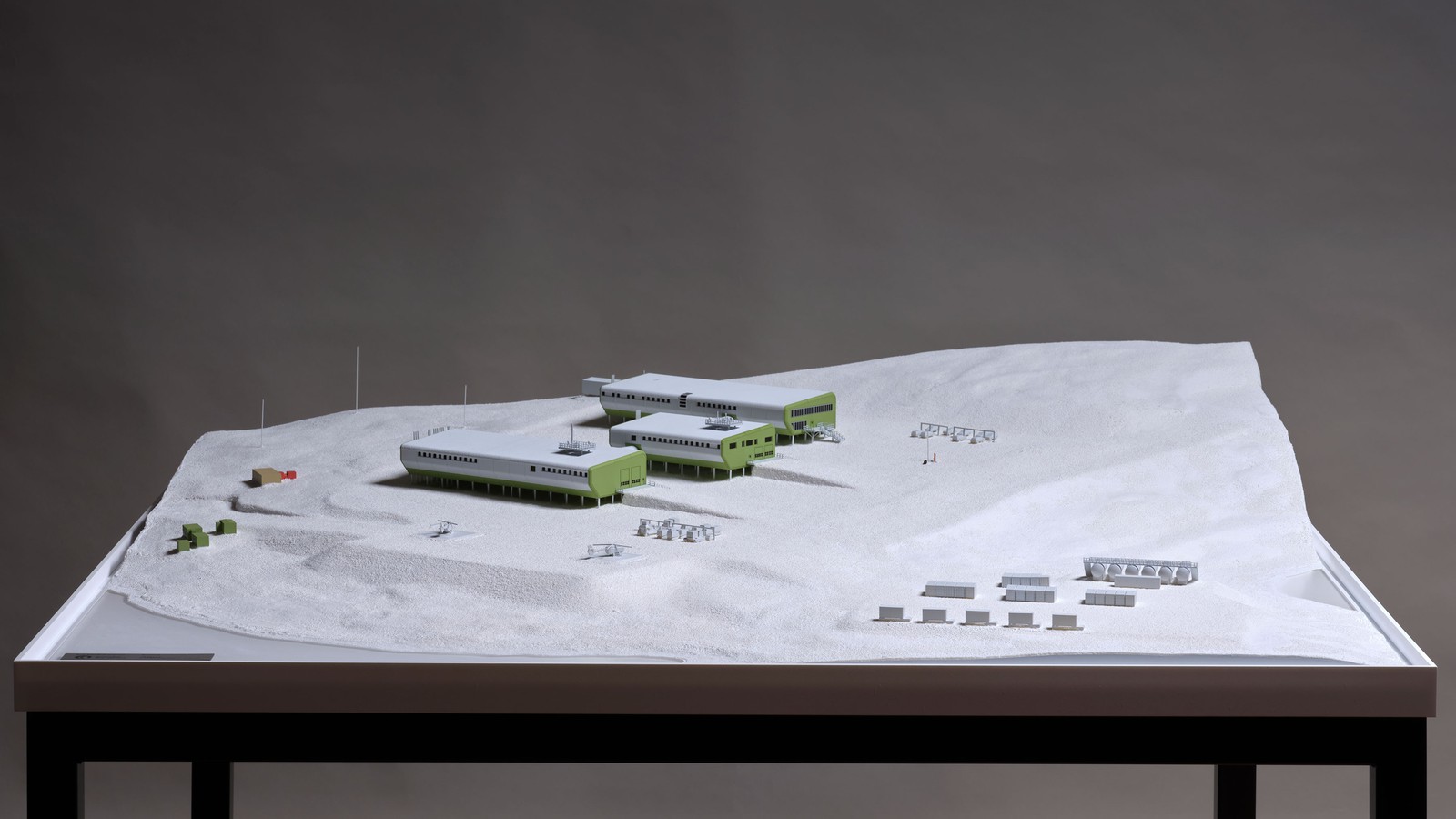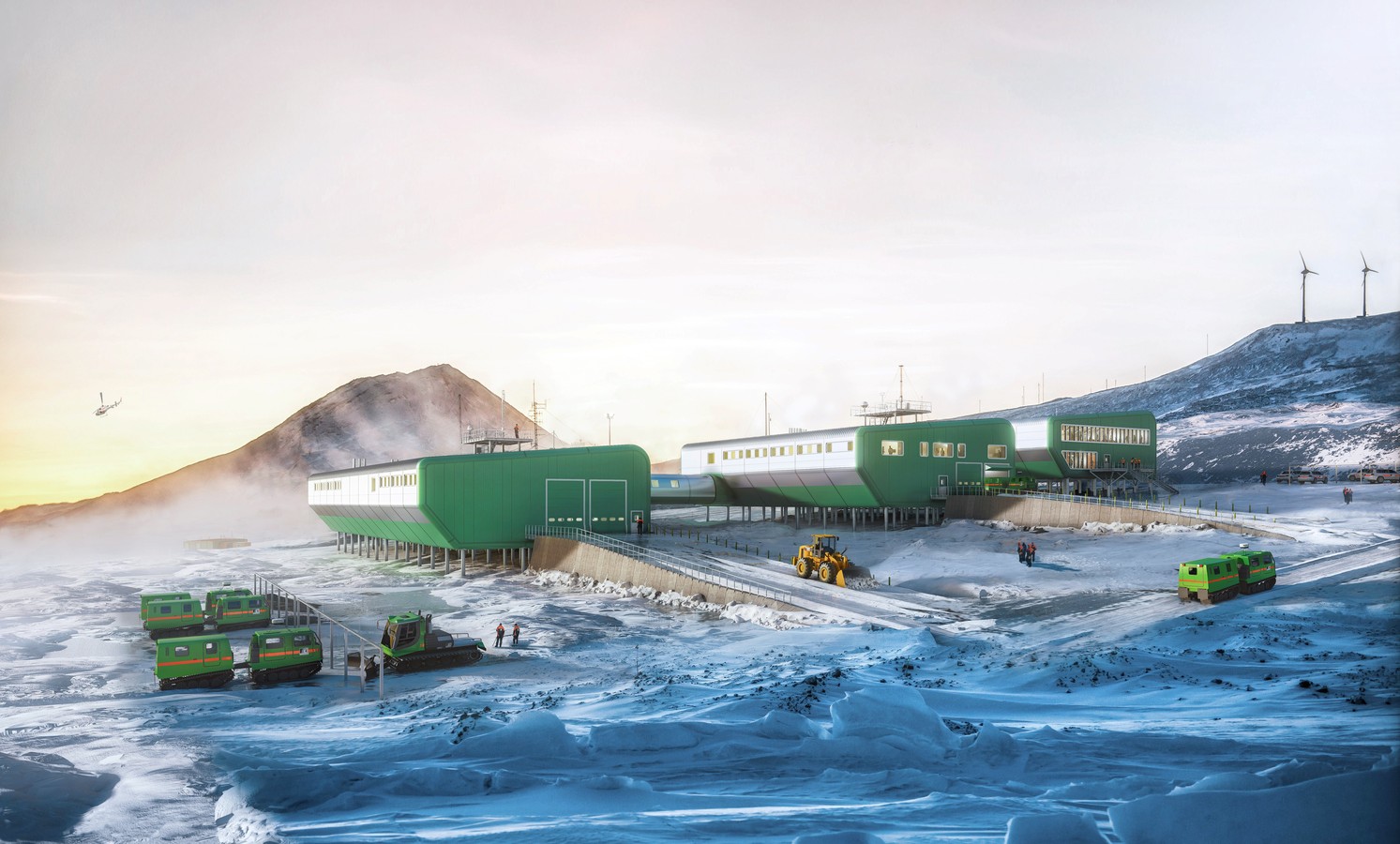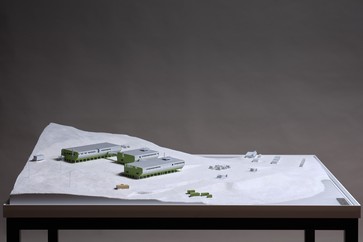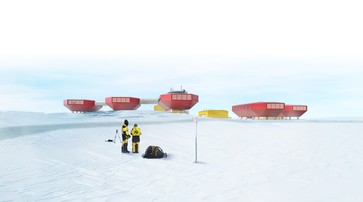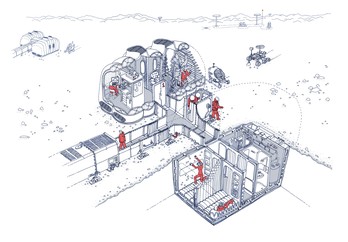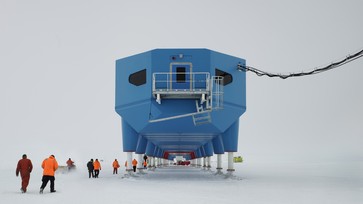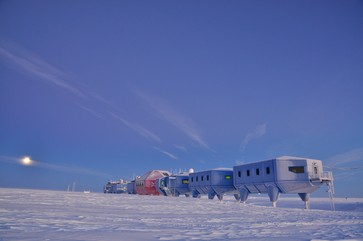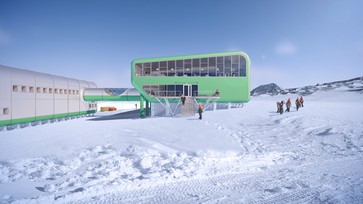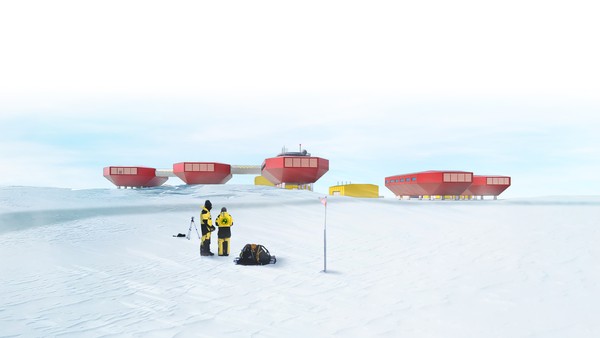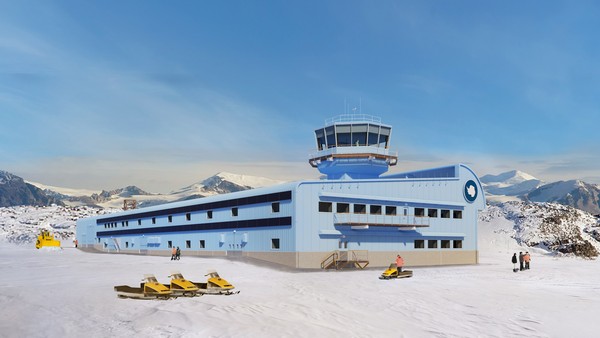Location
Pram Point, Ross Island, Antarctica
Date
2017 – 2028
Client
Antarctica New Zealand
HBA Team
Roxane Baillet, Hugh Broughton, Helen King, Steve McCloy, Devon Moar, Gianluca Rendina, Robert Songhurst, Emily Tunnacliffe, Jessica Knight, Kirsty Sweetman, Eleanor Worthington, Alex Pirozenoks, Jonah Kurylowich, Jack Lettice.
Collaborators
Jasmax (Partner Architect)
WSP (Structural and Civil Engineers)
Steensen Varming (Services Engineer)
Rawlinsons (Quantity Surveyors)
The Building Intelligence Group (Design Leaders)
Billings Design Associates (Cladding Consultants)
Leighs Construction (Main Contractor)
Scott Base is located on Pram Point on Ross Island. Temperatures in the winter drop below -50°C with 24-hour darkness for around four months. The first iteration of the base was designed for Sir Edmund Hillary’s Trans Antarctic Expedition in 1957. A permanent presence has been maintained in the Ross Dependency ever since.
Many of the current structures have now reached the end of their effective life. As a result, in 2017, Antarctica New Zealand embarked on the process to redevelop Scott Base and provide a facility to support science for the next 50 years. We were appointed to develop the architectural design based on our experience working on other polar research projects for the UK, USA and Spain.
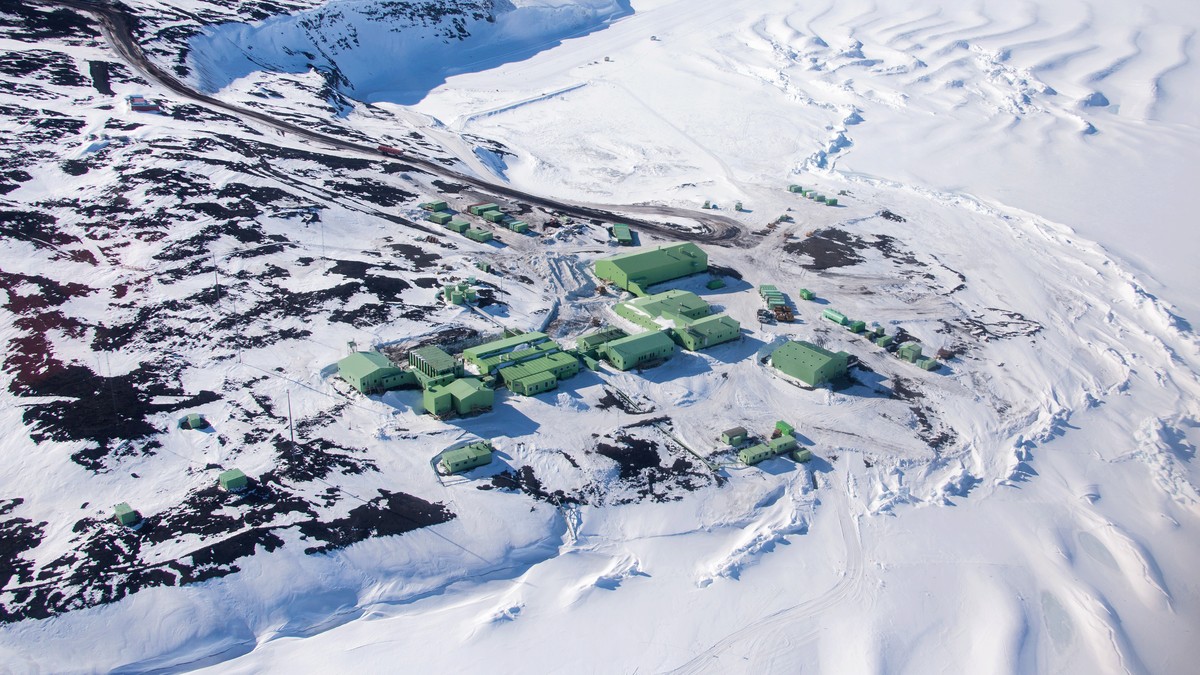
Aerial view of the existing base
Our design comprises three inter-connected aerodynamically shaped two-storey buildings of matching width, which step down the hillside. The three buildings are offset from each other to minimise risk of snowdrift between and are connected with enclosed links so that the lower level of the upper building connects to the upper level of the lower building. All the buildings are elevated above the ground to encourage wind to flow under, thereby minimising snow accumulation. The geometry of the buildings was tested using snow simulation flumes and wind tunnels to arrive at the optimum aerodynamic form.
The upper building contains the living accommodation and is the primary point of entrance to Scott Base. The upper level contains a mix of single and twin bedrooms, ablutions blocks and living spaces to support a summer population of 100 and a winter crew of 15. The dining room includes a glazed end wall with spectacular views towards Mount Erebus and Mount Terror. The lower level contains the medical suite, laundry, recreational spaces, food storage, shop, locker room, a welcome lounge and plant spaces.
The middle building contains laboratories and offices on the upper level. The lower level is dedicated to open-plan deep-field science expedition preparation with level access via a bridge link to the field stores in the lower building.
The lower building contains the vehicle workshop, inter-continental cargo handling area, waste management and central storage. A small roof deck will support science which requires unimpeded views of the horizon and atmosphere.
The interior design will foster a strong sense of well-being whilst minimising maintenance. Warm finishes are being selected for durability, comfort, economy and well-being. Significant thought is going into ways in which the design can reflect New Zealand’s cultural and natural landscape, capturing the essence of what it means to be a New Zealander, by conveying Māori values and reflecting New Zealand’s history of involvement in Antarctica.
Windows are carefully placed to make the most of natural light and reinforce connections with the Antarctic landscape. The layout has been developed to include lots of places for people to stop and chat as they walk from one place to another, fostering collaboration.
To minimise the environmental footprint of the base, the majority of the energy demand will be provided by the wind turbines. Heating will be provided by electric boilers. Only when there is no wind will the base be powered by fuel powered generators. Waste heat from these generators will be collected and utilised to heat the base. Water will be produced using reverse osmosis. A vacuum drainage system will be used to dispose of wastewater. Plant is distributed around the base with duplication of key services such as water storage, power production and communications to maximise the resilience of critical life support systems.
The buildings will be constructed in New Zealand and then split into full width four-bay blocks for shipping to Antarctica. On arrival these blocks will be moved into position using multiple self-propelled motorised modules where they will be joined together prior to final fit-out works and on-site commissioning. This process is expected to reduce the overall construction time by up to two years by comparison to a more traditional containerised solution. Construction on site will commence in 2023 and is expected to be completed in 2028.
Building Information Modelling (BIM) is a key feature of the process to design the new Scott Base and the project leverages BIM technologies and workflows to deliver against demanding client requirements. User group workshops have been held at each stage of the project, where engagement has been supported by visualisations and virtual walk-throughs output directly from the BIM model. These have facilitated detailed client feedback, informing ongoing design development and ensuring that there will be no surprises when the built reality is delivered.
Alongside our work designing the new base, we are also assisting Antarctica New Zealand with the design for relocating their Long-Term Science installations and of the temporary base which is required to enable continued science support during the construction project.
